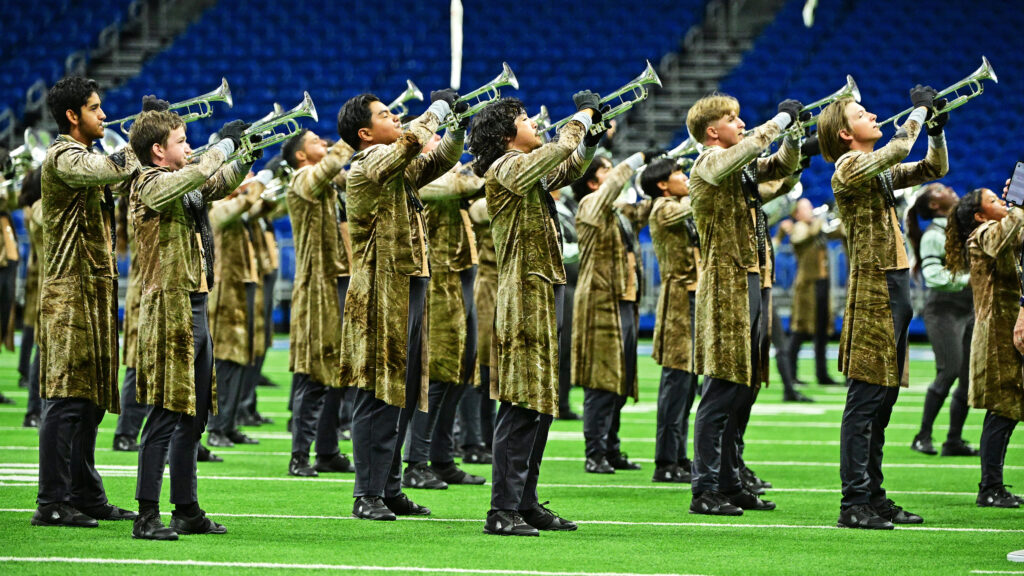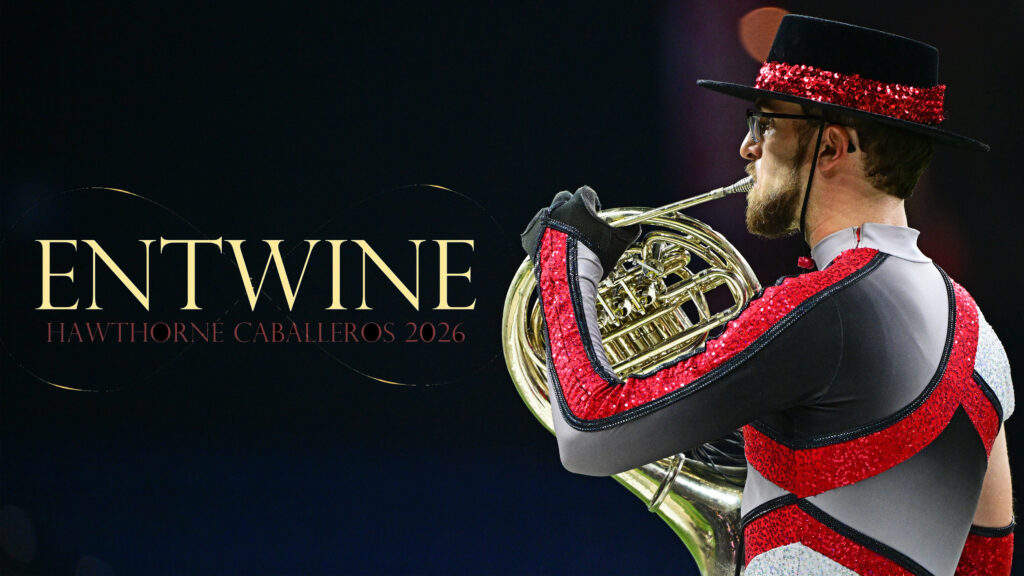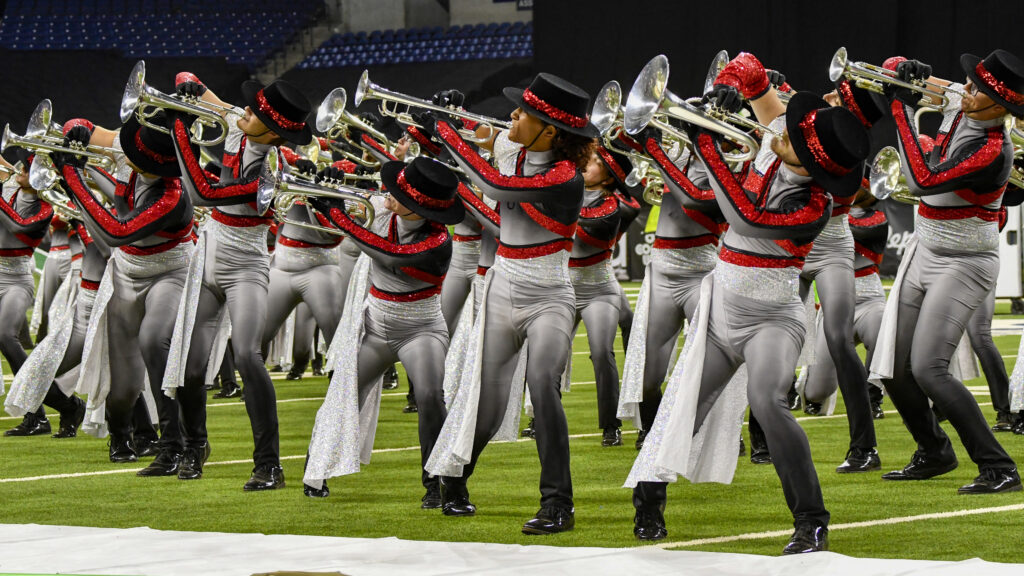Each Friday starting this week, drum corps historian Michael Boo will be contributing a column to DCI.org. This is his first installment. PBS broadcasts through historyBy Michael BooWell, it’s that time of year when we’re still “coming down” from the Drum Corps International World Championships, and we’re looking forward to the 2002 Drum Corps International PBS broadcast to let us relive the greatest season of drum corps ever.Drum Corps International has enjoyed a special relationship with the Public Broadcast System since 1975, when the first DCI World Championship was broadcast. That was my first year of marching in a corps, The Cavaliers, and back then, the broadcast was live.All my friends knew to watch it, and in doing so, I wouldn’t have to explain quite so much just what drum corps was, and what it wasn’t.Steve Rondinaro is a household name to us all. In the early years, he was paired up with various famous “personalities,” some with more personality than others. It was his job to try to keep the outside talent focused on what they were seeing and hearing on the field. Often, one could sense the jaw of the imported “personality” drop when the earlier corps performed, and continue to drop further as the corps got better and better. Some wouldn’t know quite what to say. Steve pulled it out of them with the skill of a dentist removing an impacted wisdom tooth.It was amusing to view the tape after getting home from tour, and after returning from the Championships after ageing out and attending as a spectator. There weren’t many VCRs in homes during that period, so I would have to find an educational institution that taped the program for its students. (It’s true. We lived without VCRs and the ability to tape “The Gong Show” for posterity. How we survived to become the generation that created “Survivor” is beyond me.)Steve Rondinaro: “So, what did you think of that?”Famous personality: “They were good.”And now you know why we came to depend on the likes of Steve, Dennis DeLucia and Michael Cesario; a triumvirate that could explain the joy and passion of drum corps to aliens from outer space.One wonderful thing about the PBS broadcast was seeing over and over the highlights of each corps’ performance, elements that went by way too fast in real time. I specifically remember seeing the 1984 broadcast after the season and marveling all over again how the then-Garfield Cadets got into that surprise company front at the end of “Tonight” from “West Side Story.” I asked the owner of the VCR to replay that move multiple times, trying to figure out how George Zingali pulled it off. And, I admit, I never did figure it out.Of course, with the new DVD Legacy Series, one can do all sorts of tricks with a move such as that — pause, slow motion, rewind, etc. I expect that it will take the average corps fan much longer to watch each DVD than the actual length of the broadcast captured on the disk.The Legacy Series is truly a marvel that allows fans to rediscover decades worth of Drum Corps International World Championships, all over again or for the first time. Tom Blair, who has given us the best PBS broadcasts ever, painstakingly went through every minute of every PBS broadcast master tape, synchronizing the audio to the video and cleaning up distortion. The final product is one that is astounding to watch and striking to listen to.I was fortunate to be part of the behind-the-scenes production of the series, doing historical research on each year for Steve Rondinaro and Michael Cesario’s short introduction on each DVD. (Steve focused on world events and Michael on the corps themselves.) Going back into various record books and almanacs, and prying loose distant memories from the corps performances was enlightening and a bit discombobulating. There were so many memories, and they’re all on this series. It was hard to pick just the top drum corps moments from each year.To this day, Drum Corps International enjoys a special relationship with PBS, allowing us to introduce drum corps to the masses and reward fans with some post-season memory reinforcement. Over the years, I’ve caught things from the broadcast that I missed in person, despite seeing the corps perform several times. From the upper deck, you just don’t notice the facial expressions that tell you how much the kids are enjoying themselves, and how hard they are really working to deliver the product to the fans. Some of the most memorable moments of my drum corps season came after the season.These moments have included seeing the camera get a close-up of a guard member smiling through clenched teeth while panting after the aerobic workout of a lifetime, witnessing the huge number of instruments performed by a pit percussionist in a matter of seconds, viewing the feet of the horn line rapidly running across the field while perfectly playing a passage that would be difficult for symphonic musicians to play sitting down, and close-in stick visuals in the drum line that defy gravity. The list could go on for pages.One of the reasons we get such great close-ups is that Tom Blair travels to many shows prior to the Drum Corps International World Championships. He notates where the cameras should look for each and every corps, down to the second. Before the cameras are running at the World Championships, he knows that after the flag toss over the horn line, the cameras will cut for five seconds to a phenomenal mallet run, then pan to a dance step in the horn line, moving to the snare drummers playing on each others’ drums just before the high camera takes over to show us a massed box rotation that transforms into a sideways-moving parallelogram. The neat thing about watching the PBS broadcast (and then, of course, buying and owning the DVD or video) is that you get to see drum corps as if you’re seeing them for the first time, even if you’ve seen them all season long. My special joy in watching the PBS broadcast is in thinking, “Wow. I was there. And now I’m there all over again. And, ooo, I don’t remember that move. …”So, if we didn’t see you on the 50, we can still see you on the couch. Through the PBS broadcast, the memories of the Drum Corps International World Championships don’t die, they’re just reinforced and shoved further back in our brain cells, where we’re allowed to rewind our favorite moments to our heart’s content. To order The Legacy Collection of historical Drum Corps International DVDs. Michael Boo has been involved with drum and bugle corps since 1975, when he marched his first of three seasons with The Cavaliers. He has a bachelor’s degree in music education and a masters degree in music theory and composition. He has written about the drum corps activity for over a quarter century for publications such as Drum Corps World, and presently is involved in a variety of projects for Drum Corps International, including souvenir program books, CD liner notes, DCI Update and Web articles, and other endeavors.Michael currently writes music for a variety of idioms, is a church handbell and vocal choir director, an assistant director of a community band, and a licensed Realtor in the state of Indiana. His other writing projects are for numerous publications, and he has published an honors-winning book on the history of figure skating.His hobbies include TaeKwonDo and hiking the Indiana Dunes.But more than anything, Michael is proud to love drum corps and to be a part of the activity in some small way, chronicling various facets of each season for the enjoyment of others.
- Marching Music's Major LeagueTM





